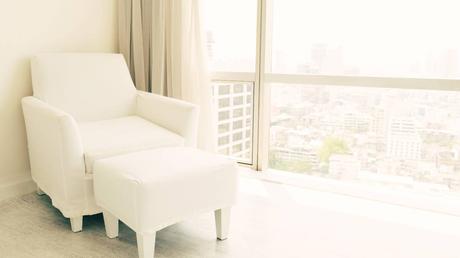
Last Updated on June 30, 2024 by Kravelv
When it comes to choosing the perfect recliner, the fabric or material is one of the most crucial considerations. Not only does it affect the chair's appearance, but it also impacts durability, comfort, and maintenance. Here's an in-depth guide to help you navigate through the best fabrics and materials for recliners, so you can make an informed decision.
Key Takeaways:- Leather: Luxurious, durable, easy to clean, but expensive and requires maintenance.
- Fabric: Offers versatility in colors and textures, with options like microfiber, chenille, cotton, and linen, each with distinct pros and cons.
- Synthetic Materials: Durable, affordable, and often stain-resistant, but less breathable and environmentally friendly.
- Blended Fabrics: Combine the benefits of natural and synthetic fibers, providing versatility and affordability with varying quality and maintenance needs.
Leather
Pros:- Luxurious Appearance: Leather has a timeless and sophisticated look that can elevate the aesthetic of any room.
- Durability: High-quality leather, like full-grain or top-grain leather, is incredibly durable and can withstand years of use.
- Easy to Clean: Leather is relatively easy to clean with a damp cloth and doesn't absorb spills as easily as fabric.
- Comfort: Over time, leather develops a patina, becoming softer and more comfortable.
Best for: Living rooms and offices where aesthetics and durability are priorities.
Also Read: Best Recliners for Small Spaces
Fabric
Fabric recliners are a versatile choice, offering a wide range of colors, patterns, and textures. Here's a breakdown of the common types of fabrics used:
Microfiber
Pros: Cons:- Static Electricity: It can attract dust and pet hair.
- Moisture Sensitivity: Microfiber can be sensitive to water and moisture.
Best for: Family rooms and homes with pets and children.
Chenille:
Pros: Cons:Best for: Bedrooms and cozy reading nooks.
Cotton:
Pros: Cons:Best for: Casual settings and those looking for natural materials.
Linen:
Pros: Cons:Best for: Formal living rooms and airy, light-filled spaces.
Synthetic Materials
Synthetic materials are engineered to offer specific benefits like enhanced durability and stain resistance. Common synthetic fabrics include:
Polyester:
Pros:- Durable: Highly resistant to wear and tear.
- Stain-resistant: Often treated to be stain-resistant.
- Affordable: Generally less expensive than natural fabrics.
Best for: High-traffic areas and budget-conscious consumers.
Acrylic:
Pros: Cons:Best for: Decorative recliners and light to moderate use.
Blended Fabrics
Blended fabrics combine natural and synthetic fibers to offer the best of both worlds. Common blends include polyester-cotton and wool-synthetic blends.
Pros: Cons:Best for: Versatile usage in different settings depending on the specific blend.
Also Read: Best Wall Hugger Recliners for Small Spaces
FAQs for Fabrics and Materials for Recliners
What is the most durable fabric for a recliner?
Leather is generally considered the most durable material for a recliner, particularly high-quality options like full-grain or top-grain leather. Among fabrics, microfiber stands out for its durability and stain resistance, making it an excellent choice for households with children or pets.
How do I clean and maintain my recliner fabric?
The cleaning and maintenance routine depends on the fabric or material:
- Leather: Wipe with a damp cloth for daily cleaning and use a leather conditioner every few months to prevent drying and cracking.
- Microfiber: Use a vacuum with a brush attachment to remove dust and a damp cloth or specialized cleaner for stains.
- Cotton/Linen: Spot clean with mild detergent and water; for deeper cleaning, check if the fabric is machine washable or requires professional cleaning.
- Synthetic Fabrics: Typically, these can be cleaned with a damp cloth and mild soap. Always check the manufacturer's care instructions.
Which fabric is best for a recliner in a home with pets?
Microfiber is highly recommended for homes with pets due to its stain resistance and durability. Leather can also be a good choice as it is easy to clean and doesn't attract pet hair, but it can be prone to scratches.
What factors should I consider when choosing a recliner fabric?
Consider the following factors:
- Durability: Choose a material that can withstand your household's level of use.
- Comfort: Ensure the fabric feels comfortable against your skin.
- Maintenance: Consider how easy it is to clean and maintain the fabric.
- Aesthetics: Select a fabric that complements your home decor.
- Cost: Ensure the fabric fits within your budget.
- Allergies: Opt for hypoallergenic fabrics if allergies are a concern in your household.
Final Words
Choosing the right fabric or material for your recliner depends on your lifestyle, budget, and personal preferences. Leather offers a luxurious and durable option for those willing to invest, while fabrics like microfiber and cotton provide comfort and variety. Synthetic materials and blends offer practicality and affordability, making them suitable for a wide range of uses. By considering the pros and cons of each material, you can select the best recliner fabric that meets your needs and enhances your living space.
